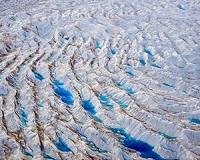 |
Tel Aviv, Israel (SPX) Nov 08, 2010 In many areas of the world, including California's Mojave Desert, rain is a precious and rare resource. To encourage rainfall, scientists use "cloud seeding," a weather modification process designed to increase precipitation amounts by dispersing chemicals into the clouds. But research now reveals that the common practice of cloud seeding with materials such as silver iodide and frozen carbon dioxide may not be as effective as it had been hoped. In the most comprehensive reassessment of the effects of cloud seeding over the past fifty years, new findings from Prof. Pinhas Alpert, Prof. Zev Levin and Dr. Noam Halfon of Tel Aviv University's Department of Geophysics and Planetary Sciences have dispelled the myth that seeding is an effective mechanism for precipitation enhancement. The findings were recently reported in Atmospheric Research.
Throwing seeds into the wind The research team used a comprehensive rainfall database and compared statistics from periods of seeding and non-seeding, as well as the amounts of precipitation in adjacent non-seeded areas. "By comparing rainfall statistics with periods of seeding, we were able to show that increments of rainfall happened by chance," says Prof. Alpert. "For the first time, we were able to explain the increases in rainfall through changing weather patterns" instead of the use of cloud seeding. Most notable was a six year period of increased rainfall, originally thought to be a product of successful cloud seeding. Prof. Alpert and his fellow researchers showed that this increase corresponded with a specific type of cyclones which are consistent with increased rainfall over the mountainous regions. They observed that a similarly significant rain enhancement over the Judean Mountains, an area which was not the subject of seeding. The researchers concluded that changing weather patterns were responsible for the higher amount of precipitation during these years. Their research method may be useful in the investigation of cloud seeding in the U.S. and other regions.
Considering the alternatives Seeding is also used in the Sierra Mountains of California and in Wyoming to try to increase precipitation in the mountains, thus increasing water levels in reservoirs. However, he says, there is no proof that this method is successful. The only probable place where cloud seeding could be successful, Alpert says, is when seeding is performed on orographic clouds, which develop over mountains and have a short lifespan. In this type of cloud, seeding could serve to accelerate the formation of precipitation.
Share This Article With Planet Earth
Related Links Tel Aviv University Water News - Science, Technology and Politics
 Water Flowing Through Ice Sheets Accelerates Warming And Ice Flow
Water Flowing Through Ice Sheets Accelerates Warming And Ice FlowBoulder CO (SPX) Nov 08, 2010 Melt water flowing through ice sheets via crevasses, fractures and large drains called moulins can carry warmth into ice sheet interiors, greatly accelerating the thermal response of an ice sheet to climate change, according to a new study involving the University of Colorado at Boulder. The new study showed ice sheets like the Greenland Ice Sheet can respond to such warming on the order o ... read more |
|
| The content herein, unless otherwise known to be public domain, are Copyright 1995-2010 - SpaceDaily. AFP and UPI Wire Stories are copyright Agence France-Presse and United Press International. ESA Portal Reports are copyright European Space Agency. All NASA sourced material is public domain. Additional copyrights may apply in whole or part to other bona fide parties. Advertising does not imply endorsement,agreement or approval of any opinions, statements or information provided by SpaceDaily on any Web page published or hosted by SpaceDaily. Privacy Statement |